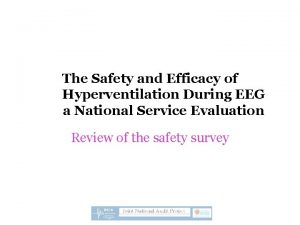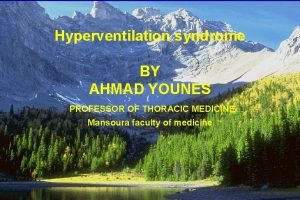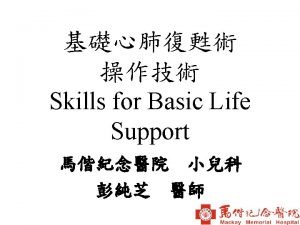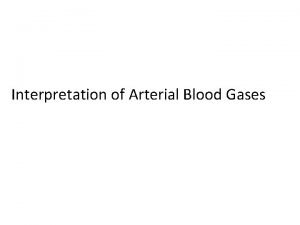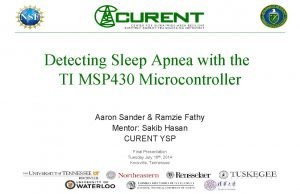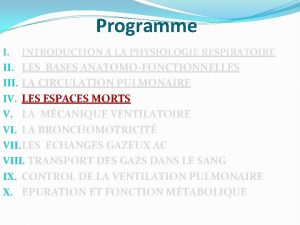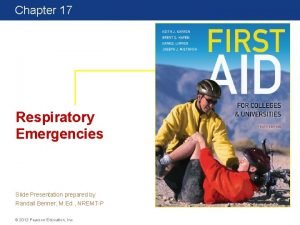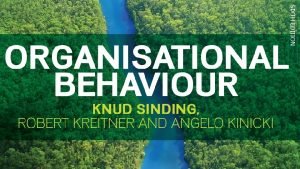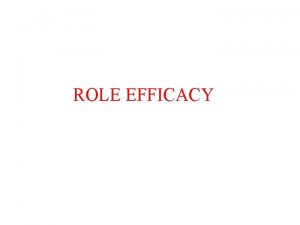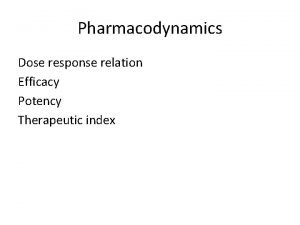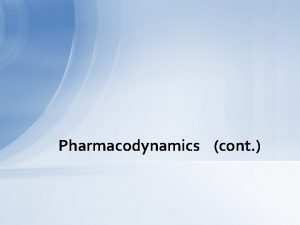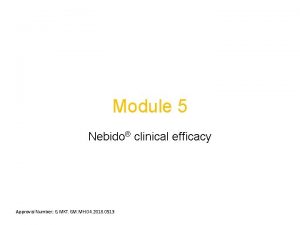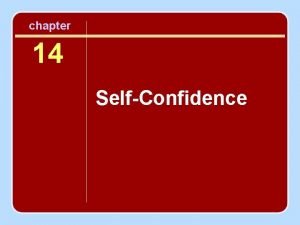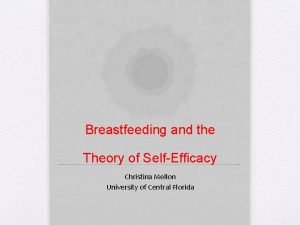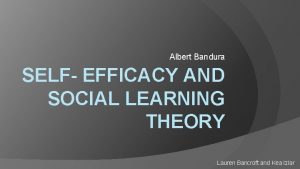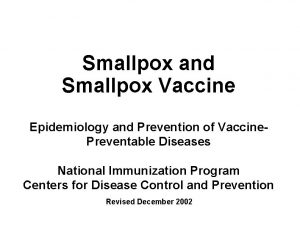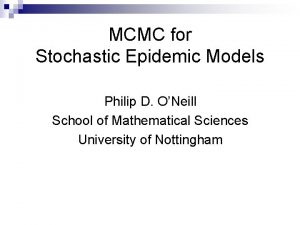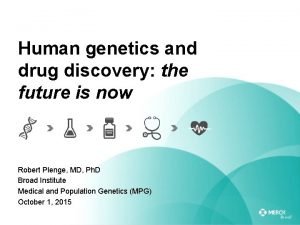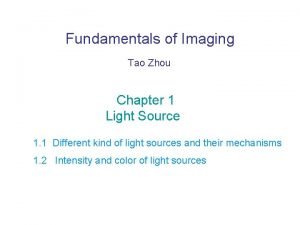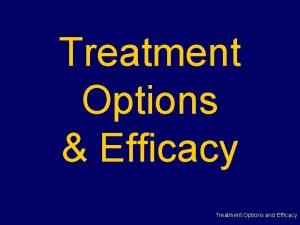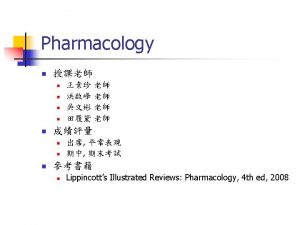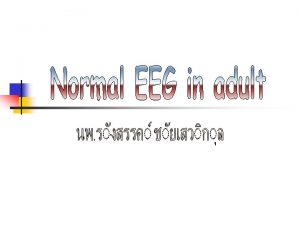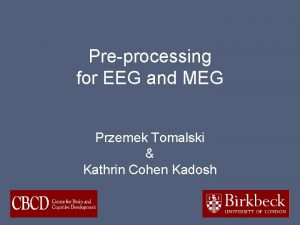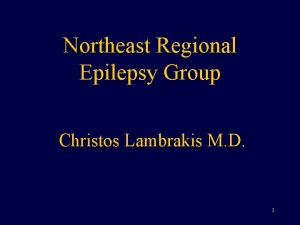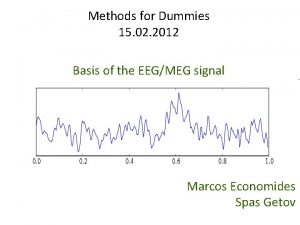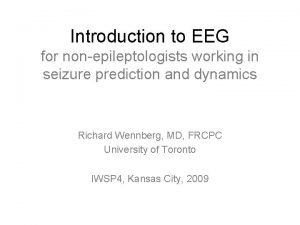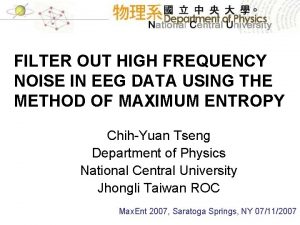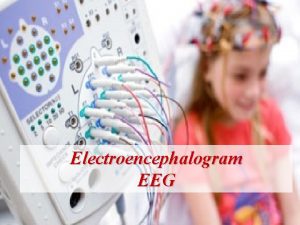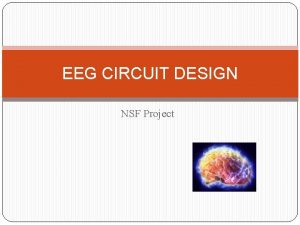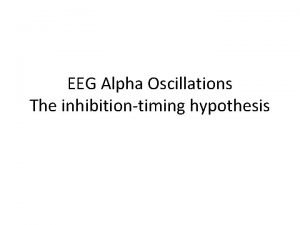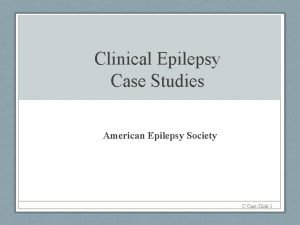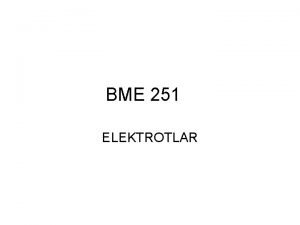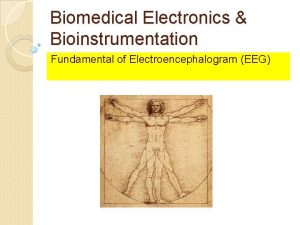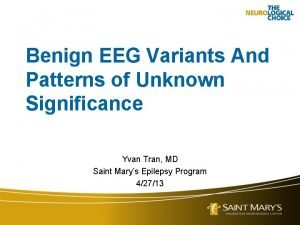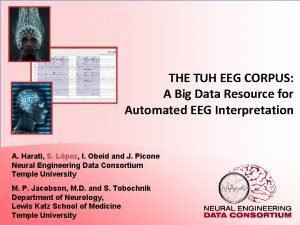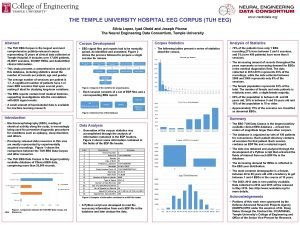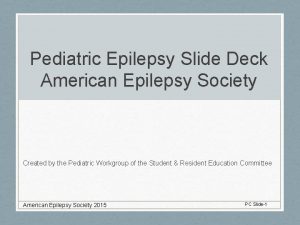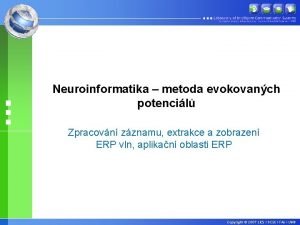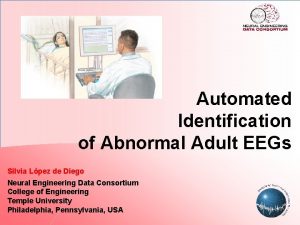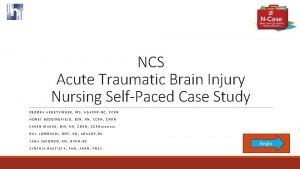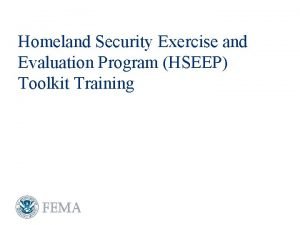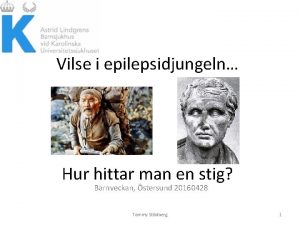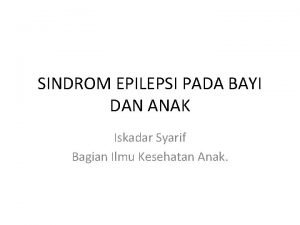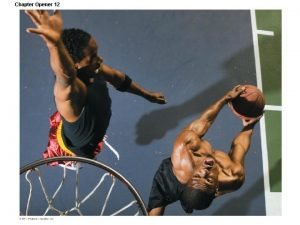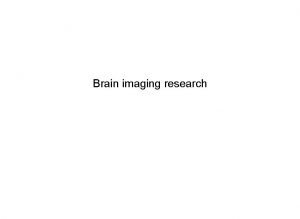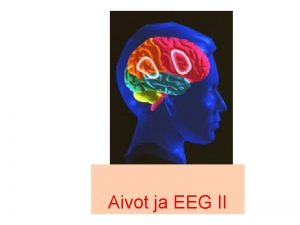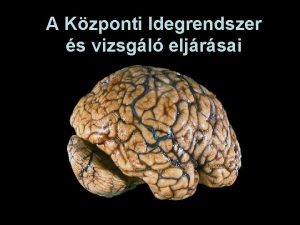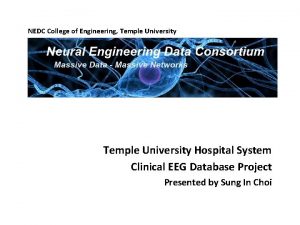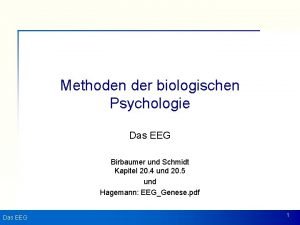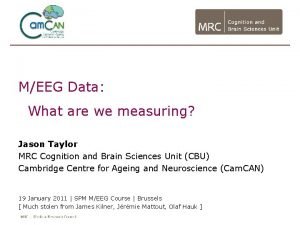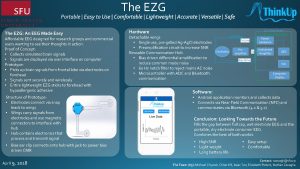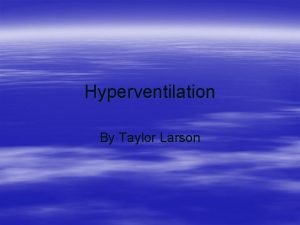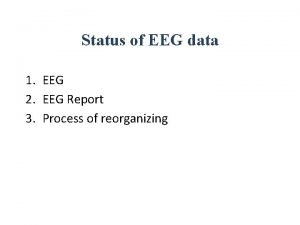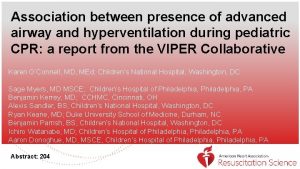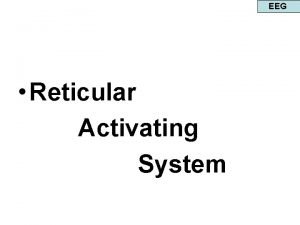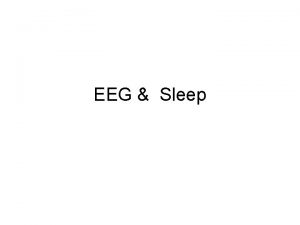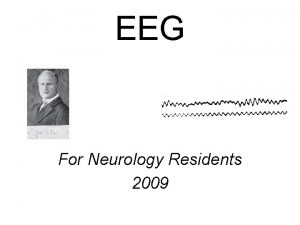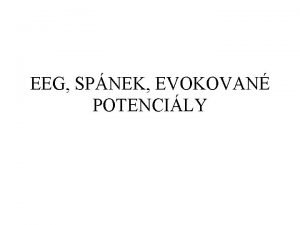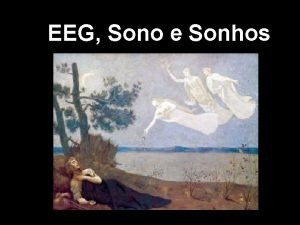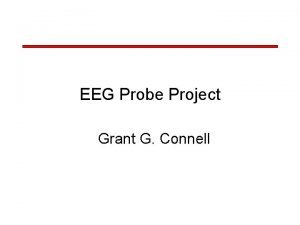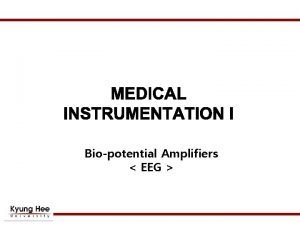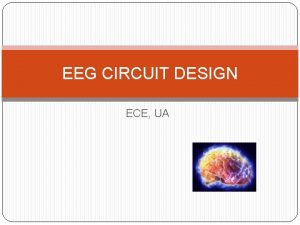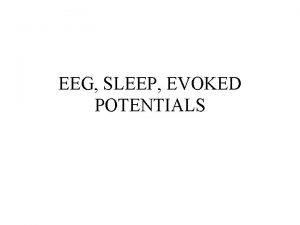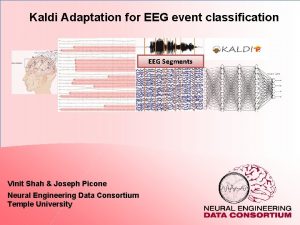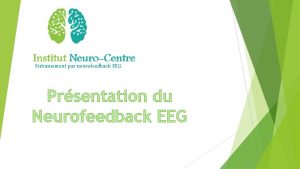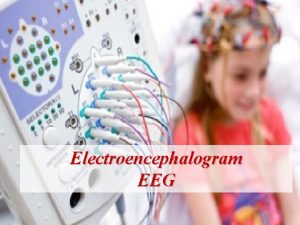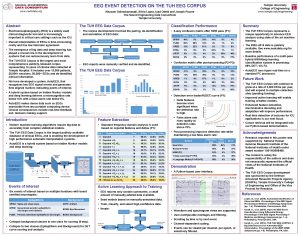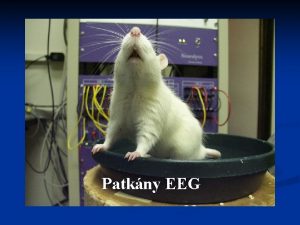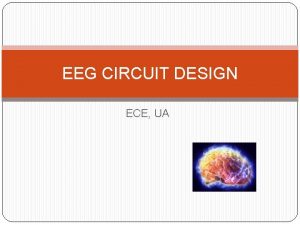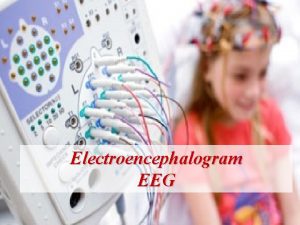The Safety and Efficacy of Hyperventilation During EEG






























































- Slides: 62

The Safety and Efficacy of Hyperventilation During EEG a National Service Evaluation Review of the safety survey

METHODOLOGY

Methodology • 63 forms were sent out • 56 completed & returned from all areas of the country from Plymouth to Inverness (response rate of 89%)


Map Plot Inverness Aberdeen Dundee Larbert Edinburgh Glasgow Newcastle Sunderland Paisley Belfast Preston Liverpool Clwyd Stafford Stoke-on-Trent Birmingham Coventry Hereford Worcester Cardiff Bristol Taunton Barnstaple Exeter Plymouth Middlesbrough York Leeds Manchester/Salford Sheffield Leicester Norwich King’s Lynn Northampton Cambridge Chalfont Ipswich London Chertsey/Guildford/St Helier Cantebury/Medway Hayward’s Heath Southampton Poole Portsmouth

RESULTS

Do you use published guidelines for safety of hyperventilation? Yes=11, No=45 RELEVANT TO SAFETY • NICE 2004/2006 • Increasing the yield of EEG (Mendez, O. et al, 2006, Journal of Clinical Neurophysiology) • Electroencephalography; basic principles, clinical applications and related fields (Niedermeyer, E. et al 1981) • Clinical Neurophysiology: volume 2 EEG Paediatric Neurophysiology: Special Techniques and Applications (Binnie, C. et al 2003) • Fundamentals of EEG technology: Basic concepts and methods (Fay, S. et al 1983) • Atlas of Electroencephalography: volume 1 EEG awake and sleep EEG activation procedures and artefacts (Crespel, A. et al 2005) • ACSN Guideline One: Minimum Technical Requirements for Performing Clinical Electroencephalography NOT RELEVANT TO SAFETY • Guidelines for the use of EEG methodology in the diagnosis of epilepsy (Flink, R. et al, 2002, Acta Neurol Scand 106) • Effect of hyperventilation on seizure activation: potentiation by antiepileptic drug tapering (Jonas, J. et al, 2011, Journal of Neurology, Neurosurgery and Psychiatry 82) • BSCN

contraindications Hyperventilation syndrome, tetany, fainting, distress, shivering, inability to stop overbreathing, tiredness, finger and/or peribuccal paresthesias, anxiety attacks Severe cardiac or pulmonary disease, recent myocardial infarction or stroke, intracranial haemorrhage, sickle cell anaemia, uncontrolled hypertension, Moya disease, advanced pregnancy, old age……… From the relevant literature age Patients above 65 years old should be contraindicated, the developmental age of the patient has a great bearing on the hyperventilation procedure but patients as young as 2 years old can be persuaded side effects reasons to terminate Procedure should only be carried out with informed consent, patients have the right to refuse consent Significantly abnormal heart beat, patient does not feel good, acute event, any marked EEG abnormality

Do you use a local protocol for the safety of hyperventilation? Yes = 47, No = 6 (3 under revision) • What percentage of the centres mentioned the following sub headings in their protocols? contraindications 78% age 70% consent 58% possible side effects 22% reasons to terminate HV 18%






Have you performed a local or regional audit on this topic? Yes =7, No = 49 • 5 of the audits were not related to safety or efficacy • 2 of the audits were applicable and both relating to age limitations “HV did not provide any additional information in patients above 60 years old age and therefore patients above this age to not have any activation techniques performed during their standard EEG” “HV found not to be very useful in the elderly but no less useful than in other adults over the age of 30. The only group where HV contributed significantly to diagnoses was in children and young adults. Recommendation was to continue to HV all patients regardless of age”

Can you remember any adverse events that occurred during hyperventilation regardless of how long ago they may have occurred? Yes = 6, No = 50 • Out of the 6 reporting they could, 5 were not considered to be adverse as they were expected outcomes of the procedure (seizures/auras/difficulty stopping overbreathing) • 1 was an unpredictable event (syncope – bradycardia and asystole) and therefore considered to be truly adverse

CONCLUSIONS

Summaries & Conclusions • Very few departments (20%) use published guidelines for the safety of hyperventilation and of these, only 1 was referenced • Most departments (84%) have safety protocols focusing on areas such as age limitations, contraindications and consent • Where age limitations are mentioned, a limit of 65 years is the one most commonly enforced (42%) • The most frequent contraindications mentioned are cerebrovascular disease, cardiovascular disease and respiratory disease • Only 1 memory from the vast experience across the departments over the years suggests a truly adverse event

Continued… • Anecdotally, HV appears to be a safe procedure however the second part of this audit will provide an evidence base for this • There are wide variations in protocols and many are not based on published guidelines. • The next talk will provide details of the published literature that we could use to try and standardise our protocols and procedures

Literature Review • Physiological Effects of Hyperventilation (aka Overbreathing or Hyperpnœa). • Historical Perspective. • Safety Issues: – Adverse CVS, Respiratory and CNS events (including Seizures & NEAD/PNES). • Efficacy: – Interictal Epileptiform Discharges (IEDs).

And Now Some Breaths Stop CO 2 Narcosis

Physiological Effects 1. ↓PCO 2 Hypocapnia → Vasoconstriction → Cerebral Ischaemic Anoxia → EEG slowing (Meyer & Gotoh 1960). HV → Respiratory Alkalosis → Shift in oxygen dissociation curve (Bohr effect) & Lowering of ionized calcium. 2. Recent experimental data has questioned the “Anoxia/Hypoxia Theory” and alternative explanations include an “awake-sleep transitory state” (Patel & Maulsby 1987) or a subcortical mechanism (Hoshi et al 1999). 3. Other potential (‘epileptogenic’) effects include changes in excitability of cortical neuronal pathways – as shown by negative DC shifts (Rockstroth 1990) and TMS in the corticospinal system (Seyal et al 1998). 4. Few attempts to standardize HV technique, but based on maximal EEG slowing in children: 4 mins at RR of 30/min. and VE of 3 x (Konishi 1987). Also blood gas changes AFTER 3 mins HV reach nadir for PO 2 at 5 mins. and recovery for PCO 2 at 7 mins. (Achenbach et al 1994).

Historical Perspective • 1924 Otfrid Foerster and Joshua Rosett independently report induction of (partial) seizures by HV. – 26 yr male whose “left upper limb was suddenly thrown into a violent spasm” after 8 minutes of HV. • 1934 Hans Berger describes a seizure provoked by HV during an EEG. – 21 yr woman with “genuine epilepsy suddenly stopped hyperventilation, associated with a reduction in amplitude of the background frequencies and a loss of responsiveness, and shortly thereafter a seizure developed”. • 1935 Fred Gibbs, Hallowell Davis and William Lennox demonstrated for the first time 3 Hz spike wave pattern of ‘Petit Mal’ (absence epilepsy). – “Over ventilation produces large slow waves in normal subjects, also tends to precipitate seizures in epileptic persons. The differences in wave pattern, notably the characteristic form of the EEG in petit mal (“egg and dart”), made it possible to distinguish between simple loss of consciousness and a seizure”.

Safety – Methodology and Definition • Medline (search terms: hyperventilation complications, side effects = >2, 300 articles). Standard textbooks. Guidelines finder. • Adverse Events are defined as “an incident or occurrence from which potential or actual harm resulted to a person receiving health care” (Stevens 1986). Adverse Events: cardiovascular, respiratory, CNS – cerebrovascular, seizures, non-epileptic events.

Safety – Standard Textbooks Kiloh L & Osselton J. Clinical EEG 1961 Hill J & Parr G. EEG 1963 Cooper R, Osselton J, Shaw J. EEG Technology 1974 Klass DW & Daly D. Current Practice of Clinical EEG 1979 (Guideline One) Ø Hughes J. EEG in Clinical Practice 1982 Ø Niedermeyer E & Lopes Da Silva F. EEG Basic principles 1993 Ø Fisch B & Spehlmann’s EEG Primer 1999 Ø Lüders H & Noachtar S. Epileptic Seizures (Drury I. Activation of seizures by HV). 2000** 2000 (Review) Ø Crespel A. & Gélisse P. Atlas of EEG 2005 Ø Cooper R, Binnie C, Billings R. Techniques in Clinical Neurophysiology 2005* (Practical Manual) Ø Ø

Safety - “Contraindications to HV” Category IV evidence ~ Expert Opinions 1. 2. 3. 4. 5. Diseases of heart and lungs a d Sickle cell disease (or trait) a c d Moyamoya disease a d Acute cerebral disorders a Cerebrovascular diseases associated with borderline cerebral perfusion 6. 7. 8. 9. 10. Age above 65 years b d Raised intracranial pressure b d Recent myocardial infarction c Hyperviscosity states c Uncontrolled hypertension c a b cd (a) Spehlmann’s EEG Primer (1999) (b) Cooper, Binnie, Billings. Techniques in Clinical Neurophysiology (2005) (c) Lüders and Noachter. Epileptic Seizures (2000) (d) Crespel A. & Gélisse P. Atlas of EEG 2005

Safety – “Evidence Based Guidelines” 1. 2. 3. AEEGS 1970/71 & 1986 Minimum Technical requirements for performing Clinical EEG (Guideline One). Overbreathing should be used routinely unless some medical or other justifiable reasons contraindicate it (e. g. recent SAH, intracranial hemorrhage, or significant cardio-pulmonary disease). (>3 m >1 m) ILAE 2002 Guidelines for use of EEG methodology in the diagnosis of epilepsy. A standard EEG should aim to include Hyperventilation. HV depends on the developmental age, and level of co-operation of the child and the experience of the staff. Photic stimulation should not be performed during HV. (3 m >2 m) NICE CG 2004 & 2012 The epilepsies: the diagnosis and management of the epilepsies in. . . CG 20 Use standard EEG with photic stimulation and hyperventilation, with informed consent. CG 137 Photic stimulation and hyperventilation should remain part of standard EEG assessment. The child, young person or adult and family and/or carer should be made aware that such activation procedures may induce a seizure and they have a right to refuse.

Safety – Cardiovascular Events elicited by HV (Category II & IV) • Complications in 1000 treadmill tests with HV were reported in 18 patients with CAD (1. 8%); asystole, complete SA block, atrial flutter, hypotension and severe angina (Malani et al 1993). “TMT is a safe procedure if carried out after proper patient selection and under supervision of an experienced team”. • Coronary artery spasm with ST segment changes in 127 of 206 angina patients (62%) after 6 m. HV. No reported adverse events (Nakao et al 1997). • Acute Myocardial Infarction due to coronary vasospasm in a patient associated with HV (Chelmowski & Keelan 1988). • Acute Myocardial Infarction in a patient following ‘HV test’ at coronary angiography (Fragasso et al 1989). • Asystole with syncope secondary to hyperventilation in 3 young athletes (Buja et al 1989). “Vagal mechanism”.

Safety – Respiratory Events induced by HV (Category II & IV) • Post hyperventilation Apnoea reported in 191 of 1060 patients (18%) – no significant clinical sequelae (Mangin, Krieger & Kurtz 1982). Case report of 14 yr with # mandible post HV apnoea with severe hypoxemia (Mac. Donald et al 1976). • Post hyperventilation ‘hyperventilation syndrome’ – breathing in excess of metabolic requirements (a physiological, psychological or psychiatric condition) can occur in asthma, chronic bronchitis, emphysema and PE. Symptoms include giddiness/dizziness, ataxia, blurred vision, headache, paraesthesiae, panic/anxiety, chest pain, visual hallucinations, tetany, cognitive dysfunction and syncope (Perkin & Joseph 1986, Lum 1987, and Gardner 1990). • Post hyperventilation Asthma – HV reduces p. CO 2 which promotes reflex bronchospasm (Barnes et al 1981, Hull 2012– personal communication). • Published Guidelines for Asthma and COPD give no advice about HV.

Safety – CNS cerebrovascular Events (Category IV) • Sickle cell disease and Trait (SCD) – Fatal cerebellar infarction caused by aspirin induced HV (Arnow 1978). – CVA due to HV in a patient with SCD during EEG recording (Fatunde et al 2000). – Stroke in Children with SCD during HV EEG review of literature revealed 3 case reports of 4 children with persistent hemi-paresis (Millichap 2006). • Moyamoya – “Re-build up” described in over half of 25 children with pre-existent neurological deficits but no new post HV other than transient confusion (Kodama et al 1979). – Significant reduction of oxygenated Hb detected by NIRS during EEG re-build up in 5 patients without neurological sequelae (Itoh et al 1994). – Transient Ischaemic Attacks (TIA) in 2 children during HV with EEG re-build up phenomena associated with hypoxia on NIRS (Kuroda et al 1996). – Literature review by Kuroda and Houkin (2008) mention “HV induced ischaemic attacks”…. . but also describe “distinctive pattern on EEG in children”. – TIA case report of 6 year old crying for 15 minutes during VEEG causing marked truncal ataxia and right sided weakness with EEG slowing over left parietal region (Diamini et al 2009).

Safety – HV Induced Seizures (Category III) • • “Petit Mal” in 205 of 234 patients (88%) 88 3/s S&W not in resting record (Dalby 1969). Childhood Absence seizures in 8 of 12 (67%) 67 newly diagnosed absences, each with their own critical p. CO 2 from 19 -25 mm. Hg (Wirrell et al 1996). • • Complex Partial seizures in 11 of 255 (4. 3%) 4. 3 with >3 m. HV (Miley & Forster 1977). Complex Partial seizures in 2 of 433 (0. 46%) 0. 46 with proven epilepsy (89% partial & 11% generalised) with 5 m. HV (Holmes et al 2004). Partial onset seizures in 24 of 97 (24. 7%) 24. 7 medically intractable focal epilepsies after AED↓ with 5 m. HV repeated 3 hourly. “Proved safe” (Guaranha et al 2005). Partial onset seizures in 6 of 54 (11%) 11 localisation related epilepsies after AED↓ with 3 m. HV. Rate of HV seizure induction is 6 x more than without HV. (Arain et al 2009). 1 o Generalised seizures in 2 of 475 (0. 42%) 0. 42 patients with epilepsy (79% partial & 21% generalised) with 3 m. HV (Abubakr et al 2010). Partial onset seizures in 14 of 80 (17. 5%) 17. 5 medically intractable epilepsies after AED↓ with 6 m. HV performed hourly. (Jonas et al 2011). • • • Seizures in 12 of 580 (2. 1%) 2. 1 after 3 m. HV in 1000 unselected patients for EEG {22 IGE patients 6 (27. 3%)}. (Angus-Leppan 2007; EEG Clin. Neurophysiol. 118: 22 -30).

Safety – Induced Seizures • Report of 2 children with profound developmental delay had HV induced tonic seizures (Bruno-Golden & Holmes 1993). • A case of adversive seizures induced by HV in a 6 yr old (Kawakami et al 2003). Type of Epilepsy Range of Seizures Mean No. Seizures CAE 67. 0 - 88. 0% 86% (n=246) Generalised 4. 6 – 27. 3% 10% (n=150) Partial Epilepsy 0. 46 - 24. 7% 5% (n=1029)

Safety – Non-Epileptic Events (Category III/IV) • Psychogenic non-epileptic seizures (PNES) may be provoked by HV in as many as 16 of 19 (84%) with suspected PNES (Benbadis et al 2000) and doubling the yield in 1 small RCT (Mc. Gonigal et al 2002). NICE CG 137 states (HV) ‘has a limited role and may lead to false-positive results in some people’. No PNES were reported in the 580 unselected patients of Angus-Leppan (2007), but 5 (0. 9%) patients has syncope, which may of course represent pseudo-syncope, which accounts for as many as 17% of PNES (Hubsch et al 2011). • “Pseudo-absences” or altered responsiveness have been reported in normal healthy non-epileptic children during HV induced high-amplitude rhythmic slowing (HIHARS) (Reiher & Lafleur 1977, North et al 1990, Epstein et al 1994).

Efficacy – Increased IEDs by HV (Category III) • 102 patients – 10/35 (28. 6%) 28. 6 generalised & 4/67 (6. 0%) 6. 0 partial epilepsies (Gabor & Ajmone Marsan 1969). • 242 patients – 34/90 (37. 8%) 37. 8 generalised & 76/152 (50. 0%) 50. 0 partial epilepsies (Morgan & Scott 1970) with 7% only on HV. • 356 patients – 6/49 (12. 2%) 12. 2 generalised & 13/307 (3. 4%) 3. 4 partial epilepsies (Holmes et al 2004). • 55 patients – 6/27 (22. 2%) 22. 2 in generalised & 3/28 (10. 7%) 10. 7 in partial epilepsies (Siddiqui et al 2011). • LG syndrome – 13/25 (52. 0%) 52. 0 20 generalised (Markand 1977). • JME patients – 13/60 (21. 7%) 21. 7 10 generalised (Bendiczky et al 2012). • Unselected patients – 60/580 (10. 3%) 10. 3 with 0. 9% only on HV (Angus-Leppan 2007).

Efficacy - IEDs • In 20 children with Rolandic spikes, the spike frequency was significantly lower during HV than in wakefulness (Nicholl, Willis & Rice 1998). Ø Review Article “Increasing the Yield of EEG” Mendez OE & Brenner RP. J Clin Neurophysiol 2006; 23: 282 -93. Increased IEDs Generalised Partial Epilepsy 12. 2 - 52. 0 % 3. 4 – 50. 0 % Mean IED Increase 69/261 (26. 4%) 96/554 (17. 3%)

Summary Ø There is NO evidence based, universally agreed protocol on duration of HV, or the time to record thereafter. There is some experimental evidence that 3 minutes of HV may not be sufficient. Ø Hyperventilation is not associated with clinically significant adverse events except in Sickle Cell Disease (or Trait) and coronary artery disease, and theoretically after a recent stroke or SAH. Ø Effect of Hyperventilation in the Epilepsies depends upon their Classification, but appears more likely to ‘activate’ both Seizures and IEDs in the generalised epilepsies (especially CAE).

The Safety and Efficacy of Hyperventilation During EEG Mrs Lesley Grocott Lead Scientist/Service Manager Clinical Neurophysiology University Hospital of North Staffordshire 11 th October 2012

Why did we choose to do the HV Audit? History of practice and NICE Effectiveness as an add on procedure? Is it more effective in one age group than another? Is it safe? Contraindications Possible outcomes & consent processes

The Safety and Efficacy of Hyperventilation During EEG The methodology Sharing of results and data Discussion session and way forward Recommendations and national guidelines

Centre Code Investigation Code Methodology –Form B 1. What is the age of the patient? 2. What is the gender of the patient? M/F 3. What was the referral diagnosis? Epilepsy/possible epilepsy Non epileptic attack disorder Other 4. Was hyperventilation performed? If “Yes” go to question 6 and continue questionnaire If “No” answer question 5 only Yes/No 5. Why was hyperventilation not performed? Against department protocol Child too young Insufficient co-operation from patient Patient refused Other 6. Was there a significant clinical change during HV? Do not include common effects of HV e. g. dizziness/light headedness Yes/No

Methodology-Form B cont… 7. If “Yes” was it: If no epileptic seizure occurred go to question 11. If an epileptic seizure did occur please answer questions 8, 9 and 10. An epileptic seizure A non epileptic seizure Cardiovascular event, please describe Respiratory event, please describe Cerebrovascular event, please describe 8. If an epileptic seizure was precipitated by HV, was it: Focal Generalised 9. Can you be precise about seizure type e. g. Absence, Myoclonic etc. Please describe. 10. Did similar seizures occur in the resting record? Yes/No 11. Did hyperventilation produce unequivocal epileptiform interictal EEG activity NOT seen in the resting record? (i. e. sharp waves /spikes with or without slow waves. ) Yes/No 12. Did hyperventilation exacerbate epileptiform activity previously seen in the resting record? Yes/No 13. For how long was hyperventilation performed (to nearest minute)? 14. Was HV well performed? Yes/No

Results-overview 56 Centres responded 6379 responses 6242 included because of missing data 3129 female and 3113 male Age range 0 -97 years, average 33. 5 years Patients hyperventilated 3475 (56%) Patients NOT hyperventilated 2767 (44%)

Reasons Hyperventilation Omitted Against department protocol Insufficient co-operation Too young Other (not defined) Refused 1269 (46%) 803 (29%) 513 (19%) 152 (5%) 30 (1%)

Length of Time HV performed for 3 mins in 83 % patients Range <1 -7 mins Median 3

Clinical Diagnosis Epilepsy/possible epilepsy Non epileptic attack disorder Other (not defined) 5475 (88%) 152 (2%) 616 (10%)

Results: Safety 3475 patients hyperventilated Serious Adverse Events Cardiovascular 0 (other than I tachycardia in a non epileptic event) Respiratory 0 (other than 1 wheeziness at start of HV) Cerebrovascular 0 Expected Adverse Events Epileptic seizure 69/3475 (2%) Non epileptic seizure 32/3475 (<1%)

Results: Efficacy (Patients hyperventilated 3475 ) CLINICAL EVENTS Epileptic seizures Non-epileptic events (including NEAD/PNES) NON CLINICAL EVENTS-CHANGE IN EEG ONLY IED Exacerbation

National Hyperventilation Audit Analysis of Results Categories by Decade

Epileptiform abnormalities, seizures and non epileptic events by decade

Epileptic seizures Age/ yrs 01 -10 11 -20 21 -30 31 -40 41 -50 51 -60 61 -70 >91 N 42 16 5 2 0 4 0 0 % 6 2 1 0. 5 0 1 0 0

Epileptic seizures by type Classification Type Generalised Absences 57 GTCS 1 Eyelid Myoclonia 1 Myoclonic 1 Temporal Lobe Epilepsy 6 Sensory 1 Other 2 Focal Number

Interictal Epileptiform Discharges (IEDs) Age/ yrs 01 -10 11 -20 21 -30 31 -40 41 -50 51 -60 61 -70 >91 N 22 40 17 7 9 6 0 1 % 3 5 3 1 2 2 0 3

Exacerbation on HV Age/ yrs 01 -10 11 -20 21 -30 31 -40 41 -50 51 -60 61 -70 >91 N 59 101 57 36 41 20 16 3 % 9 12 8 9 7 15 10 9

Non epileptic events Age/ yrs 01 -10 11 -20 21 -30 31 -40 41 -50 51 -60 61 -70 >91 N 1 7 4 9 6 5 0 0 % 0. 1 1 1 2 0 0

Conclusions Hyperventilation is safe (no significant complications in 3475), though it does carry a risk in inducing seizures and we have a duty to inform the patients of this as part of the consent process. The yield of clinical seizures in the ? Epilepsy group is 2. 2% (69/3170) which is more than a two foldincrease over the 29 seizures occurring in the resting record 1% (29/3170) HV increases the yield of IEDs 102/3475 (3%) HV insignificant induction of non epileptic events 32/3475 (<1%) The yield of those with a provisional diagnosis of NEAD displaying symptoms of a typical attack during the EEG is around 10% Exacerbation of IEDs occurred in 323/3170 (10%) of patients undergoing HV

Conclusion 2 HV in over 61 year old patients (n=135) No increase in adverse events was seen in those patients later in life and so no exclusion is warranted in elderly patients. Only 1% of over 60 yr olds showed IEDs not in the resting record But 14% of 60 yr olds showed exacerbation of IEDs 10% of over 91 yr olds showed exacerbation of IEDs

Recommendations There is no increase in adverse events in later life and therefore the current practice, in some centres, of excluding these patients, may be unwarranted. (Most seizures occur at less than 20 yrs age) This gives us additional information to aid diagnosis and management.

Recommendations Develop national guidelines/ minimum standards to audit against Standardisation required for trainees, quality standards etc Consent issues re driving etc (point in the pathway) ECG abnormalities-recognition and action

ANS/BSCN Proposal for Guidelines for Hyperventilation During EEG Recording PRACTICE: Three levels of practice are identified: Standards – represent the minimum that must be achieved in all cases Guidelines – suggestions that may be helpful in some clinical circumstances Standard 1 Hyperventilation (HV) should be performed for 3 to 5 minutes in room air with a respiratory rate of 20 to 30 breaths per minute, with the patient’s informed consent (or that of the parent or carer), and the EEG recording continued for at least 3 minutes afterwards. Guideline Repeat or even prolonged HV may be undertaken if clinically indicated (e. g. to induce seizures in a patient strongly suspected of having absences but who’s initial HV is unremarkable, or a patient undergoing video-EEG monitoring for medically intractable epilepsy but not having any clinical seizures). Standard 2 Qualitatively assess the patient’s HV effort (e. g. poor, moderate or good), bearing in mind that the technique may need to be modified according to the patient’s age and ability to undertake the procedure. Children may need help and encouragement to perform HV, with the use of toy windmills or balloons for example. Guideline Measure the patient’s effort quantitatively (e. g. plethysmography).

ANS/BSCN Proposal for Guidelines for Hyperventilation During EEG Recording Standard 3 Monitor the procedure continuously: document and describe any effects of HV on the condition of the patient, i. e. seizures, non-epileptic attacks or events, and be prepared to manage them. Guideline In certain circumstances it may be valid to use HV as a provocation procedure to induce a non-epileptic attack or psychogenic nonepileptic seizure (formerly known as pseudoseizures). Standard 4 Contemporaneously record a single lead ECG during HV and anticipate mild tachycardia, but stop HV if patient experiences chest pain, ST segment changes or other rhythm disturbances occur on the ECG. Standard 5 Absolute contraindications to HV include: recent stroke (intracranial haemorrhage and SAH) or myocardial infarction (MI), significant cardiac (i. e. angina) or pulmonary (i. e. COPD) disease, sickle cell disease or trait. Relative contraindications to HV include known stable cerebrovascular disease, asthma and Moya-Moya disease, where a risk benefit analysi should be undertaken with the patient’s involvement and consent.

Acknowledgements Members of the BSCN/ANS audit team & their depts Dr Chris Fisher, Consultant Clinical Neurophysiologist Staff at the National Hospital for Neurosurgery Queens Square

Questions and Discussions
 Contraindications for hyperventilation during eeg
Contraindications for hyperventilation during eeg What causes hyperventilation
What causes hyperventilation Pallor cyanosis
Pallor cyanosis Hyperventilation syndrome
Hyperventilation syndrome Corrected anion gap
Corrected anion gap Hyperventilation
Hyperventilation Espace mort anatomique
Espace mort anatomique Blue bloaters and pink puffers
Blue bloaters and pink puffers Self monitoring in organisational behaviour
Self monitoring in organisational behaviour Role efficacy
Role efficacy Potency vs efficacy
Potency vs efficacy Potency vs efficacy
Potency vs efficacy Nebido effectiveness
Nebido effectiveness Optimal self confidence
Optimal self confidence Conclusion of breastfeeding
Conclusion of breastfeeding Collective teacher efficacy
Collective teacher efficacy Collective teacher efficacy
Collective teacher efficacy Collective teacher efficacy
Collective teacher efficacy Albert bandura self-efficacy
Albert bandura self-efficacy Vaccine efficacy
Vaccine efficacy Vaccine efficacy
Vaccine efficacy Drug efficacy
Drug efficacy Luminous efficacy comparison chart
Luminous efficacy comparison chart Drug efficacy
Drug efficacy Efficacy therapy
Efficacy therapy Efficacy potency
Efficacy potency K complexes eeg
K complexes eeg Eeg sweat artifact
Eeg sweat artifact Ne regional epilepsy group
Ne regional epilepsy group Eeg for dummies
Eeg for dummies Lateral rectus spikes eeg
Lateral rectus spikes eeg High frequency filter eeg
High frequency filter eeg Eeg purpose
Eeg purpose Eeg amplifier circuit
Eeg amplifier circuit Eeg bands
Eeg bands Eeg case study
Eeg case study Yüzey elektrotları
Yüzey elektrotları Signal amplitude of eeg
Signal amplitude of eeg Wicket rhythm eeg
Wicket rhythm eeg Tuh eeg corpus
Tuh eeg corpus Tuh eeg corpus
Tuh eeg corpus Hypsarrhythmia eeg
Hypsarrhythmia eeg Eeg čepice
Eeg čepice Eeg photo
Eeg photo Eeg results abnormal
Eeg results abnormal Cpt code 95700
Cpt code 95700 Abdominal ultrasound scan glasgow
Abdominal ultrasound scan glasgow Hseep eeg
Hseep eeg Eeg
Eeg Hipsaritmia
Hipsaritmia Eeg
Eeg Eeg photo
Eeg photo Eeg tulkinta
Eeg tulkinta Rendr eeg
Rendr eeg Nicolet eeg viewer
Nicolet eeg viewer Eeg untersuchung
Eeg untersuchung Eeg meg
Eeg meg Eeg lead placement
Eeg lead placement Eeg made easy
Eeg made easy Hình ảnh bộ gõ cơ thể búng tay
Hình ảnh bộ gõ cơ thể búng tay Ng-html
Ng-html Bổ thể
Bổ thể Tỉ lệ cơ thể trẻ em
Tỉ lệ cơ thể trẻ em
